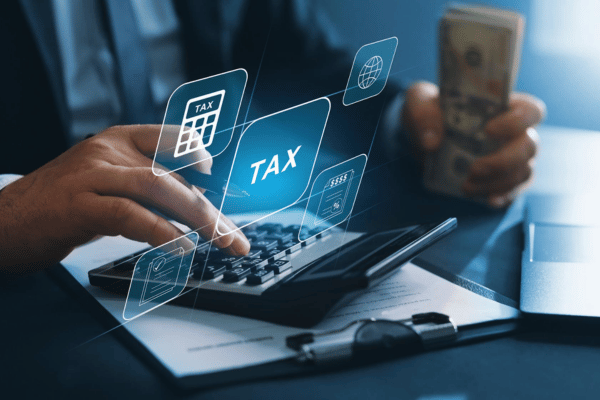Virginia R&D Tax Credit: A Comprehensive Guide for Businesses

Do businesses in Virginia qualify for the Research and Development Tax Credit or R&D Tax Credit? Yes, this federal tax claim is available in the state. We’ll discuss what makes this tax credit unique in Virginia and how businesses can qualify for this benefit.
What are Virginia R&D Tax Credits?

This tax credit allows a refundable individual and corporate income tax credit for conducting qualified research and development in Virginia to the extent a taxpayer’s Virginia-qualified R&D expenses (QREs) exceed a base amount.
Generally, this credit is allowed in the taxable year when qualified R&D expenses are reported on the federal income tax return. It comprises a base credit and a supplemental credit available only because the total amount of credits granted for a fiscal year is less than the annual credit cap ($7.7 million for tax years 2021 -2024).
Effective for taxable years beginning on or after Jan. 1, 2016, the tax credit amounts are:
- 15% of the first $300,000 in Virginia-qualified research and development expenses or
- 20% of the first $300,000 of Virginia-qualified research and development expenses if the research was conducted in conjunction with a Virginia public or private college or university, to the extent the costs exceed a base amount.
A credit cap of $7 million is allowed in any fiscal year.
Does Virginia have an R&D credit?
Yes, Virginia offers a research and development expenses tax credit. Virginia’s R&D tax credit follows IRC Section 41 rules for qualified activities and expenses and a modified version of the federal credit method.
Eligibility Criteria for Virginia Businesses
C-corporations, S-corporations, LLCs, and Partnerships are eligible for this credit. Companies operating in the state of Virginia can claim this credit. Taxpayers qualify for the R&D Tax Credit if they have QREs as defined by IRC §41 in Virginia during the tax period. Taxpayers can claim the R&D Tax Credit to offset their tax liability.
Four-Part Test for Qualifying Activities
Technological in Nature
To qualify for research credits, the activity should fundamentally rely on principles of physical sciences, biological sciences, computer science, or engineering and scientific methods. This requires the use of technology or engineering in a field of science.
Moreover, it aims to develop or improve a product, process, or software’s functionality, performance, reliability, or quality. Examples include developing new materials, improving manufacturing processes, or enhancing software functionality.
Permitted Purposes
The activity must relate to a new or improved business component’s function, performance, reliability, quality, or composition. It should intend to develop a new or improved product, process, or software. Moreover, it ensures that the research is not conducted for non-commercial purposes, such as social science or arts-related endeavors.
Elimination of Uncertainty
The activity must be intended to discover information to eliminate uncertainty concerning a particular method or capability for developing or improving a product or process. Uncertainty exists if the capability, method, or design of the product, process, or software is uncertain or not readily known.
Process of Experimentation
The activity must constitute the process of experimentation involving simulation, evaluation of alternatives, confirmation of hypotheses through trial and error, testing and modeling, or refining or discarding of hypotheses.
It should involve a systematic process designed to evaluate one or more alternatives and include testing hypotheses, modeling, prototyping, and iterative analysis. It also needs to identify uncertainties and test potential solutions to resolve them.
Calculating the Virginia R&D Tax Credit

Suppose your business intends to use the Primary Virginia R&D Credit Method (Form RDC). In that case, Regular Credit is equal to either 15% of the first $300,000 in Virginia QREs or 20% of the first $300,000 of Virginia QREs if the research was conducted with a Virginia college or university, to the extent these expenses exceed the base amount.
Suppose your business intends to calculate this amount using the Alternative Simplified Method. This tax credit equals 10% of the difference between current-year Virginia QREs and 50% of the average Virginia QREs incurred for the three preceding taxable years. If there are no QREs in the prior three years, the credit is 5% of the current year’s qualified expenditures.
Suppose your business qualifies for the Major Research and Development Expenses Tax Credit (Form MRD). The credit equals 10% of a taxpayer’s current year Virginia QREs over the base amount (50% of the average for the prior three tax years).
Selling or Transferring the Virginia R&D Tax Credit
Yes, taxpayers can sell or transfer this tax credit in Virginia. Credits granted to a partnership, limited liability company, or electing S corporation will be allocated to the individual partners, members, or shareholders, respectively, in proportion to their ownership interests in these entities or by a written agreement entered into by the individual partners, members, or shareholders using Form PTE within 30 days after the credit is granted UNLESS the partnership, limited liability company, or electing S corporation elects for the credits not to be allocated but to be received and claimed at the entity level by the partnership, limited liability company, or electing S corporation.
Qualifying Virginia Research Expenditures
Generally, the R&D tax credit covers two categories of qualified research expenses: in-house and contract research expenses. In-house research expenses include wages paid to employees for any qualifying activities performed, supplies purchased to conduct qualified research, and contract research expenses paid to conduct qualified research.
To clarify, only wages, including all taxable wages reported on an employee’s W-2 Form, can be declared qualifying research expenditures. In addition, it should be highlighted that only employees involved in qualified research activities or directly supporting these initiatives are qualified.
Any tangible property bought to conduct qualified research can be considered a supply for this tax credit. For example, a firm in Virginia working to improve the quality of a product may declare the materials used for that project as supply expenses.
Contract research expenses are when a business performs qualified research on behalf of the taxpayer. In this case, 65% of the amount paid to the non-employee can be considered a qualified expense.
How to Claim Virginia R&D Tax Credits

For this tax benefit, companies must file IRS Form 6765, Credit for Increasing Research Activities. This process includes identifying qualifying research activities and providing documentation proving these costs meet the Internal Revenue Code Section 41 requirements. Companies may use business records, financial records, oral testimonies, and technical documents.
Before you complete this Form, you should familiarize yourself with the instructions mandated by the IRS. The PDF version of this Form can be easily downloaded from the IRS website.
In general, the IRS Form 6765 has four sections:
- Section A is used to claim the regular credit and contains 11 lines of required information.
- Section B applies to the Alternative Simplified Credit or ASC.
- Section C identifies additional forms and schedules that require reporting based on one’s business structure.
- Section D only applies to qualified small businesses or QSBs making a payroll tax election.
The IRS recommends that companies calculate their credit using both regular and simplified credit methods, and then they fill out the section (A or B) that would result in the greatest tax benefit.
Maximizing the Benefits of the Virginia R&D Tax Credit
If your business intends to make the most of this credit, you need to take note of the following:
- Strategic planning for R&D activities: Your company should incur Virginia qualified research to claim more extensive tax claims.
- Identify all qualifying expenses: Check average Virginia-qualified research. This will help you determine which expenses can be used for this credit.
- Choose the most advantageous calculation method: Determine which method is most advantageous for your business.
- Stay informed about updates to the credit: Update yourself on the latest regulations for future reference.
- Reinvest tax savings into further R&D efforts: Your company should utilize the funds obtained from this credit to innovate more.
Claiming the Virginia R&D Tax Credits
R&D Tax Credits can be advantageous to qualified companies. Businesses should confer with tax experts who can help them make the most of this tax benefit. Following tax credit guidelines is key to avoiding any possible complications.
FAQs
What qualifies for the R&D tax credit?
Companies with activities that pass the four-part test can qualify for the R&D tax credit.
How many states have R&D tax credits?
R&D tax claim is a federal benefit, so businesses from all states can claim it.